우리 모두는 국제 우주 정거장(ISS)이 지구 궤도를 돌고 있다는 것을 알고 있습니다.
어떤 사람들은 ISS에서 중요한 과학 실험이 정기적으로 수행된다는 것을 알고 있을지 모르지만, 보통 사람에게는 그게 전부입니다!
우리는 몇 가지 최고의 사실을 통해 이 기술적 경이로움을 조명하기 위해 왔습니다. 그러니 안전벨트를 착용하고 폭발을 준비하세요. 정말 힘든 여정이 될 것입니다!
국제우주정거장은 1998년부터 2011년 사이에 건설됐다.
우주에서 ISS를 조립하는 우주비행사 2명
ISS는 단지 한 국가가 아니라 다양한 국가 우주 기관의 광범위한 집합체에 의해 만들어졌습니다.
일부 모듈은 미국에서 제작되었으며 다른 모듈은 90년대와 2000년대 초반에 러시아, 유럽, 일본, 캐나다에서 제작되었습니다.
실제 조립은 1998년 첫 번째 모듈인 러시아산 Zarya가 러시아 프로톤 로켓에 탑재되면서 시작되었습니다.
나머지 모듈은 모두 NASA의 우주 왕복선을 통해 ISS로 운반되었습니다.
2000년까지는 사람이 살지 않았습니다.
Yuri Gidzenko, Sergei K. Krikalev 및 Bill Shepherd의 사진
ISS에 탑승한 최초의 승무원은 2000년 11월 러시아가 제작한 Soyuz TM-31 우주선을 타고 Expedition 1로 그곳으로 수송되었습니다.
3명의 승무원은 러시아 우주비행사 유리 기젠코(Yuri Gidzenko)와 세르게이 K. 크리칼레프(Sergei K. Krikalev) 두 명과 임무 사령관 역할을 하는 미국 우주비행사 빌 셰퍼드(Bill Shepherd)로 구성됐다.
세 사람 모두 이미 우주에서 많은 경험을 갖고 있었으며 Krikalev는 이미 소련 MIR 우주 정거장을 타고 우주에서 1년을 보냈습니다.
ISS는 끊임없이 진화하고 있습니다.
2000년과 2015년에 더 많은 모듈이 장착된 ISS
2011년까지 우주 정거장에는 150개 이상의 다양한 구성 요소와 14개의 가압 모듈이 축적되었으며, 우주 비행사들은 모든 부품을 연결하여 우주에서 1,000시간 이상을 기록했습니다.
이후 11년 동안 5개의 모듈이 더 추가되었으며, 이미 더 많은 모듈이 작업 중입니다.
ISS에 탑승한 우주비행사들은 매일 고강도 훈련을 해야 합니다.
무중력 상태에서 운동하는 우주비행사
웃기게도 우주에서 생활하는 것은 인체에 좋지 않습니다.
가장 중요한 요인 중 하나는 중력이 거의 없다는 점입니다. 이로 인해 우주비행사의 뼈 밀도가 낮아지고 근육이 서서히 사라질 수 있습니다.
이러한 문제를 예방하는 데 도움이 될 수 있으므로 운동이 시작됩니다.
ISS에 탑승한 승무원은 24시간 동안 16번의 일출과 일몰을 볼 수 있습니다.
우주에서 지구를 바라보는 우주비행사 제시카 메이어
이는 ISS가 1.5시간마다 한 번씩 지구 궤도를 돌기 때문에 발생합니다. 상상할 수 있듯이 이는 우주비행사의 수면 일정에 큰 혼란을 가져올 수 있습니다.
ISS에는 미세중력만이 존재하기 때문에 우주비행사는 침대에 그냥 누워 있을 수 없습니다.
대신 그들은 승무원 객실 벽에 부착된 침낭에서 잠을 잔다. 이 침낭은 사람이 들어갈 수 있을 만큼 충분히 큰 작은 공간이다.
ISS에서 수행된 대부분의 연구는 우주에서의 생활에 중점을 둡니다.
ISS에서 실험을 진행 중인 우주비행사
우주비행사들은 잠도 자지 않고, 식사도 하지 않고, 휴식도 취하지 않을 때 첨단 과학 실험을 수행합니다.
실험에는 미세 중력에서 식물을 재배하는 것, 미생물이 우주에서 얼마나 잘 생존할 수 있는지 테스트하는 것, 우주가 DNA에 어떤 영향을 미치는지 연구하는 것, 심지어 정상적인 인간 생식이 가능한지 여부까지 포함됩니다!
후자는 아직 인간에게 테스트되지 않았지만 여러 동물 테스트가 수행되었지만 호의적이지 않습니다.
ISS에서 수행된 일부 실험은 별을 깊이 조사합니다.
NASA의 NICER 배송 준비 중
ISS의 일부 장비는 현재 일어나고 있는 일을 더 잘 이해하기 위해 우주를 관찰하도록 설계되었습니다.
NICER라는 한 장비는 우주에서 가장 밀도가 높은 물체인 중성자별을 연구합니다.
한편, 알파 자기 분광계는 우주의 기본 구성 요소 중 일부인 우주선을 포착하고 분석하는 데 사용됩니다.
이것은 물리학자들이 우주의 기원에 대해 더 많은 것을 배우려고 시도하는 데 사용됩니다.
ISS는 아마도 지금까지 만들어진 단일 물체 중 가장 비싼 물체일 것입니다.
모듈을 전달하기 위해 ISS로 향하는 로켓
2010년까지 총 비용은 이미 1,500억 달러에 이르렀으며, 미국이 587억 달러, 러시아가 120억 달러, 일본과 유럽이 50억 달러, 캐나다가 20억 달러를 부담했습니다.
나머지 돈은 다양한 우주선을 타고 ISS를 오가는 부품과 우주 비행사를 운송하는 데 사용되었는데, 이는 결코 저렴하지 않습니다!
우주비행사가 ISS에서 보낸 최장 시간은 340일이다.
ISS에 탑승한 우주 비행사 Mikhael Kornienko와 우주 비행사 Scott Kelly
러시아 우주 비행사 Mikhael Kornienko와 미국 우주 비행사 Scott Kelly는 ISS에서 기록적인 시간을 보낸 행운의 두 사람이었습니다.
가장 흥미로운 실험은 우주비행사를 대신하여 작업이 거의 또는 전혀 필요하지 않았습니다. 왜냐하면 그들은 우주에 있는 것의 장기적인 영향을 연구했기 때문입니다.
과학자들은 스콧 켈리(Scott Kelly)와 지구에 있는 그의 일란성 쌍둥이 형제 마크(Mark)를 모두 연구할 수 있었기 때문에 정확한 비교를 할 수 있었습니다.
영원히 우주에 머물지는 않을 것입니다.
아티스트 렌드
Sierra Nevada Corp.이 새로운 공기주입식 국제 우주정거장을 건설하고 있습니다.
ISS의 모듈 중 다수는 사용된 기술이 생성된 이후 비약적으로 발전했기 때문에 이미 상당히 오래된 것입니다.
이는 ISS가 이론적으로 계획보다 훨씬 오랫동안 우주에 머물 수 있지만 결국에는 쓸모 없게 될 것임을 의미합니다.
ISS의 우주 체류 시간은 이미 몇 차례 연장됐지만 이제 그 끝이 눈앞에 다가왔습니다.
2022년 1월 NASA는 2031년 1월 ISS의 궤도를 이탈하여 남태평양의 외딴 지역에 충돌시킬 계획을 발표했습니다.
모든 좋은 일에는 끝이 있기 마련이지만, 우리가 밤하늘을 올려다보면 여전히 슬프고 더 이상 ISS가 우리를 향해 깜박이는 것을 볼 수 없습니다.
ISS는 언제나 평화롭고 생산적인 국제 협력을 위한 희망의 등불로 남을 것입니다.
우리는 여러분이 ISS가 인류를 위해 열어준 모든 가능성에 대해 정보를 얻었을 뿐만 아니라 영감을 얻었기를 바랍니다!
10 Incredible Facts About The International Space Station
We all know that the International Space Station (the ISS) is orbiting our planet.
Some might know that important scientific experiments are routinely carried out on the ISS, but to the average person, that’s about it!
We’re here to shine some light on this technological marvel with some of the best facts, so buckle up and prepare for blast-off – it’s going to be quite the ride!
The International Space Station was constructed between 1998 and 2011.

The ISS wasn’t created by just one nation but an extensive collection of different national space agencies.
Some modules were created by the US, and others were created by Russia, Europe, Japan, and Canada throughout the 90s and early 2000s.
The actual assembly began in 1998 when the first module, the Russian-made Zarya, was launched on a Russian Proton rocket.
The rest of the modules were all ferried to the ISS by NASA’s Space Shuttles.
It wasn’t inhabited until 2000.

The first crew to live aboard the ISS were shipped there on the Russian-built Soyuz TM-31 spacecraft as Expedition 1 in November 2000.
The three-person crew consisted of two Russian cosmonauts, Yuri Gidzenko and Sergei K. Krikalev, and an American astronaut, Bill Shepherd, acting as the mission’s commander.
All three had a large amount of experience in space already, with Krikalev having already spent an entire year in space aboard the Soviet MIR Space Station.
The ISS is constantly evolving.
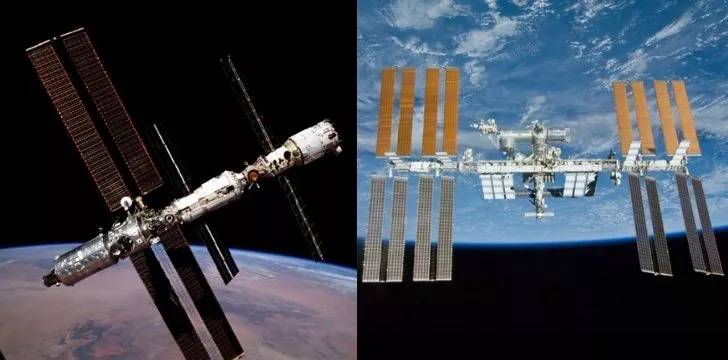
By 2011, the space station had accumulated more than 150 different components and fourteen pressurized modules, with astronauts clocking more than 1,000 hours in space, connecting all the pieces.
Five more modules were added in the following eleven years, with more modules already in the works.
Astronauts aboard the ISS have to do intense daily exercises.

Funnily enough, living up in space isn’t good for the human body.
One of the most significant factors is the near-absence of gravity, which can cause an astronaut’s bones to lose density and make their muscles slowly fade away.
This is where exercise comes into play, as this can help prevent these issues.
The crew aboard the ISS can see the sunrise and set 16 times in 24 hours.
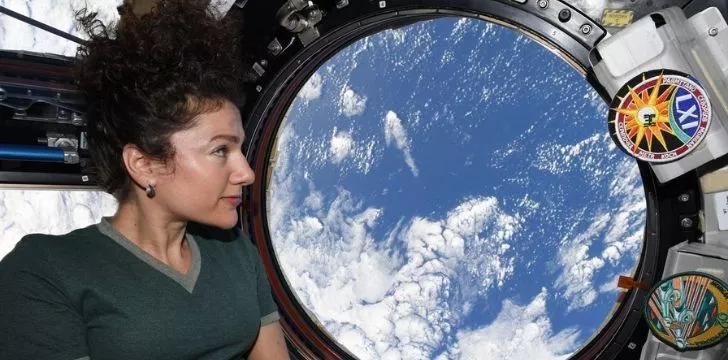
This happens because the ISS orbits the Earth once every 1.5 hours. As you can imagine, this can absolutely wreak havoc on astronauts’ sleep schedules.
Because there is only microgravity on the ISS, astronauts can’t simply lie down in bed.
Instead, they sleep in sleeping bags attached to the walls of the crew cabins – tiny compartments that are just large enough to fit a person inside.
Most research conducted aboard the ISS focuses on living in space.

When the astronauts aren’t sleeping, eating, or relaxing, they conduct advanced scientific experiments.
Experiments include trying to grow plants in microgravity, testing how well microbes can survive in space, studying how space affects DNA, and even whether normal human reproduction is possible!
The latter hasn’t been tested on humans yet, but several animal tests have been done, which don’t look favorable.
Some of the experiments done on the ISS look deep into the stars.
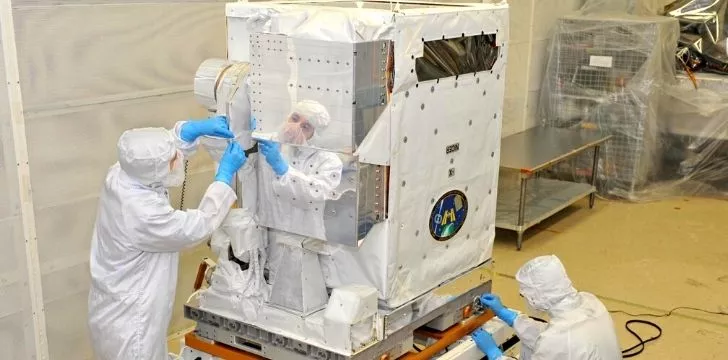
Some of the ISS’s instruments are designed to look out into the universe to better understand what’s happening.
One instrument, NICER, studies the densest object in the universe, neutron stars.
On the other hand, the Alpha Magnetic Spectrometer is being used to try and capture and analyze cosmic rays, which are some of the fundamental components of the universe.
This, in turn, is being used by physicists to try and learn more about the origins of the universe.
The ISS is likely the single most expensive object ever built.
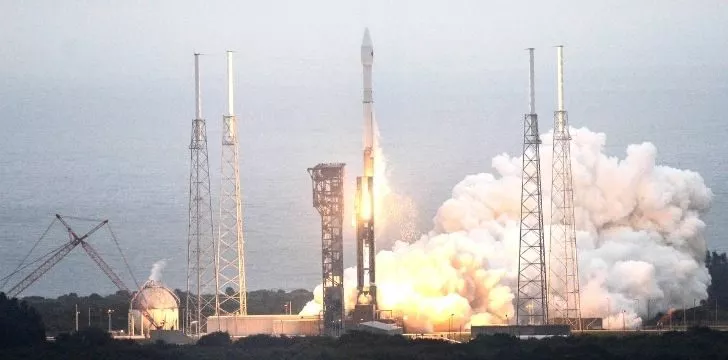
By 2010 the total cost had already reached $150 billion, with the US contributing $58.7 billion, $12 billion from Russia, $5 billion from Japan and Europe, and $2 billion from Canada.
The rest of the money went into ferrying components and astronauts to and from the ISS aboard various spacecraft, which doesn’t come cheap!
The longest time spent on the ISS by an astronaut is 340 days.
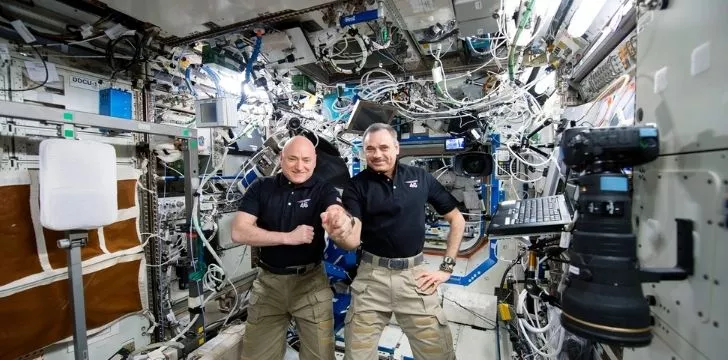
Russian cosmonaut Mikhael Kornienko and American astronaut Scott Kelly were the lucky two who got to spend the record-breaking time aboard the ISS.
The most exciting experiment required little to no work on behalf of the astronauts, as they studied the long-term effects of being in space.
Scientists were able to make accurate comparisons, as they were able to study both Scott Kelly and his Earth-bound identical twin brother, Mark.
It won’t stay up in space forever.
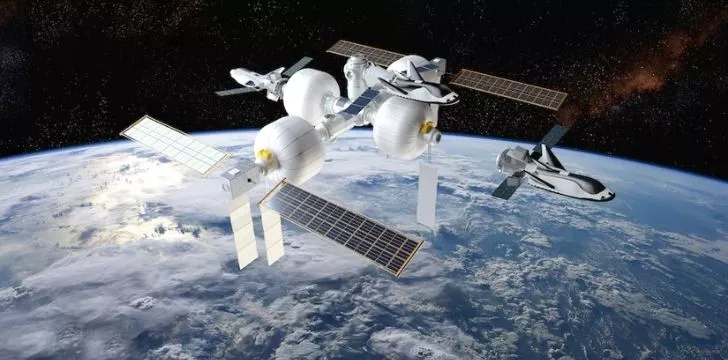
Many of the modules on the ISS are already quite dated as the technology used has advanced by leaps and bounds since they were created.
This means that while the ISS could theoretically stay in space for much longer than planned, it will eventually become useless.
The ISS’s time in space has already been extended a few times, but its end is now in sight.
In January 2022, NASA announced plans to de-orbit the ISS in January 2031 and crash it into a remote part of the South Pacific Ocean.
All good things must come to an end, but it will still be sad when we look up at the night sky and can no longer be able to see the ISS blinking back at us.
The ISS will always remain a beacon of hope for peaceful and productive international cooperation.
We hope you come away from this not just informed but inspired about all the possibilities the ISS has opened up for the Human race!










